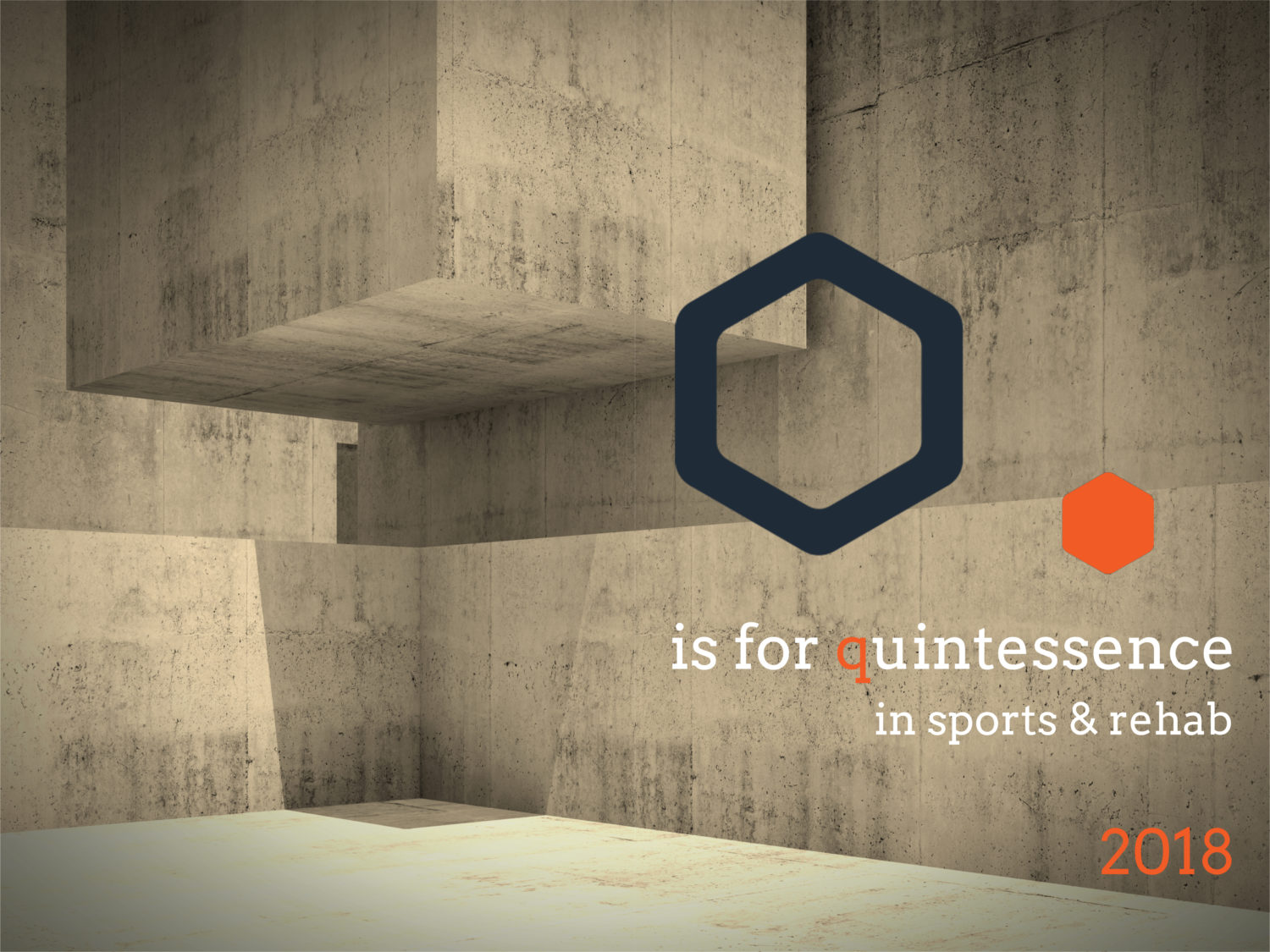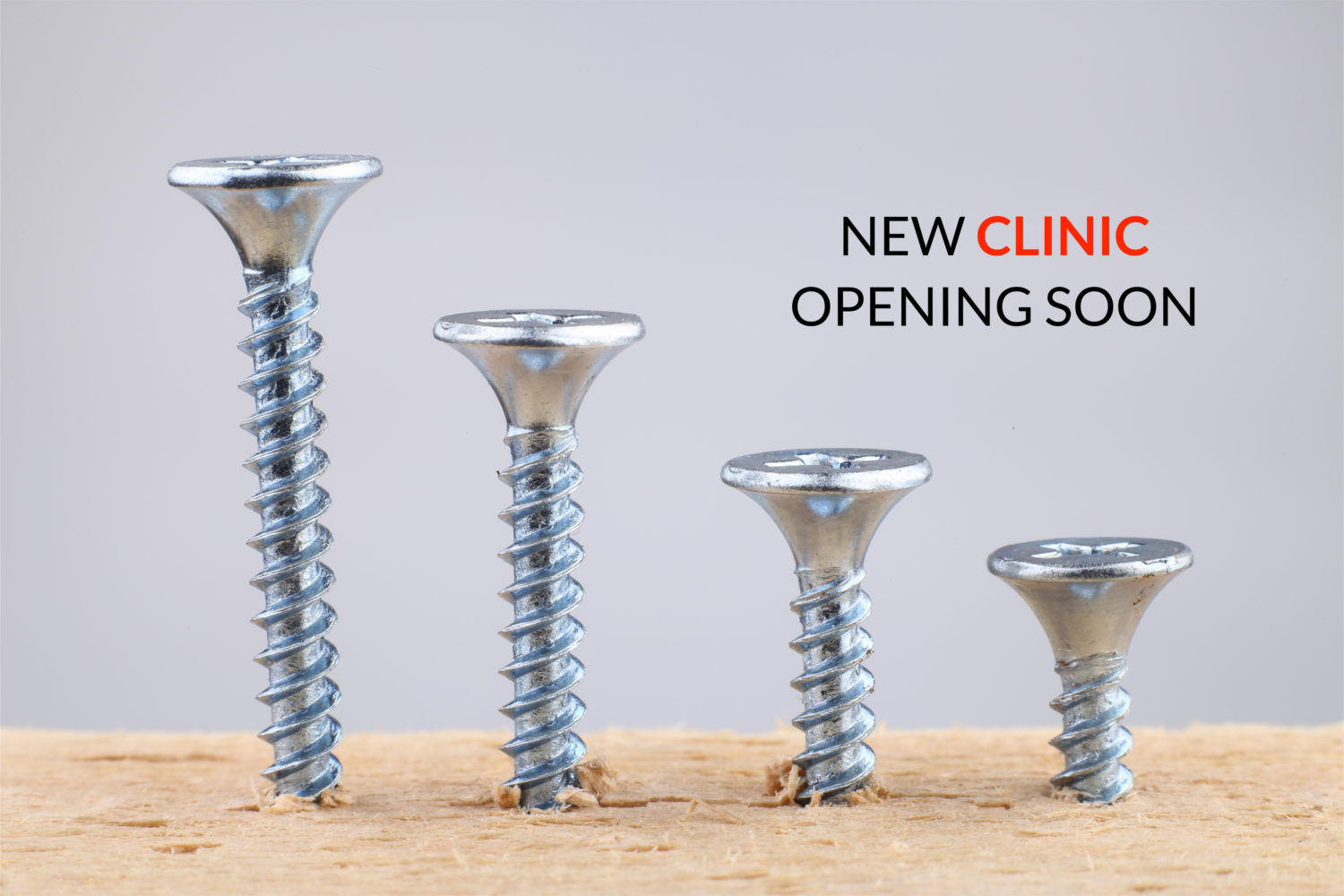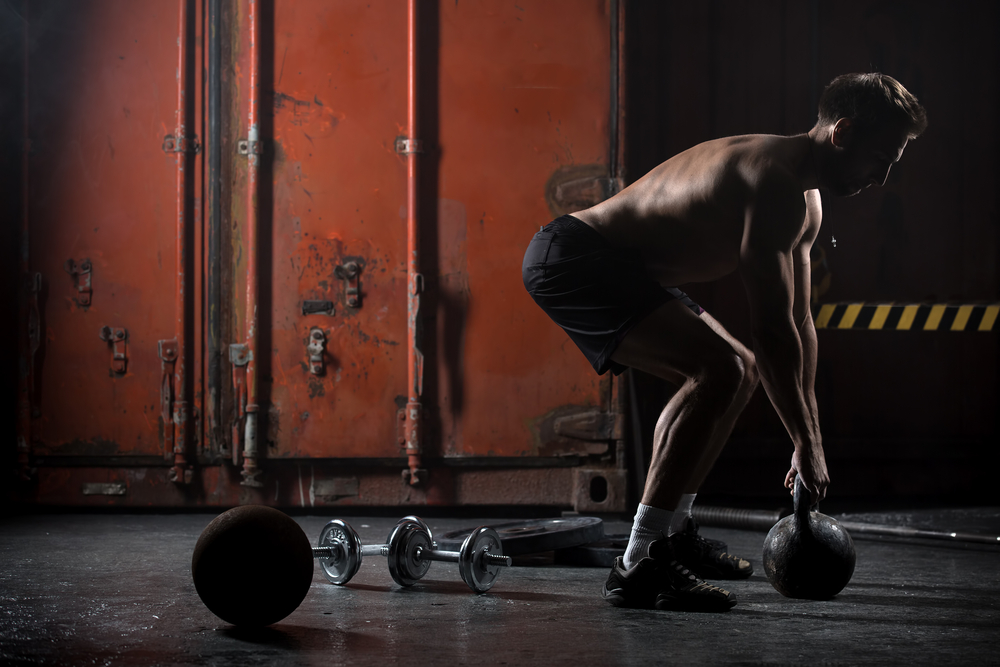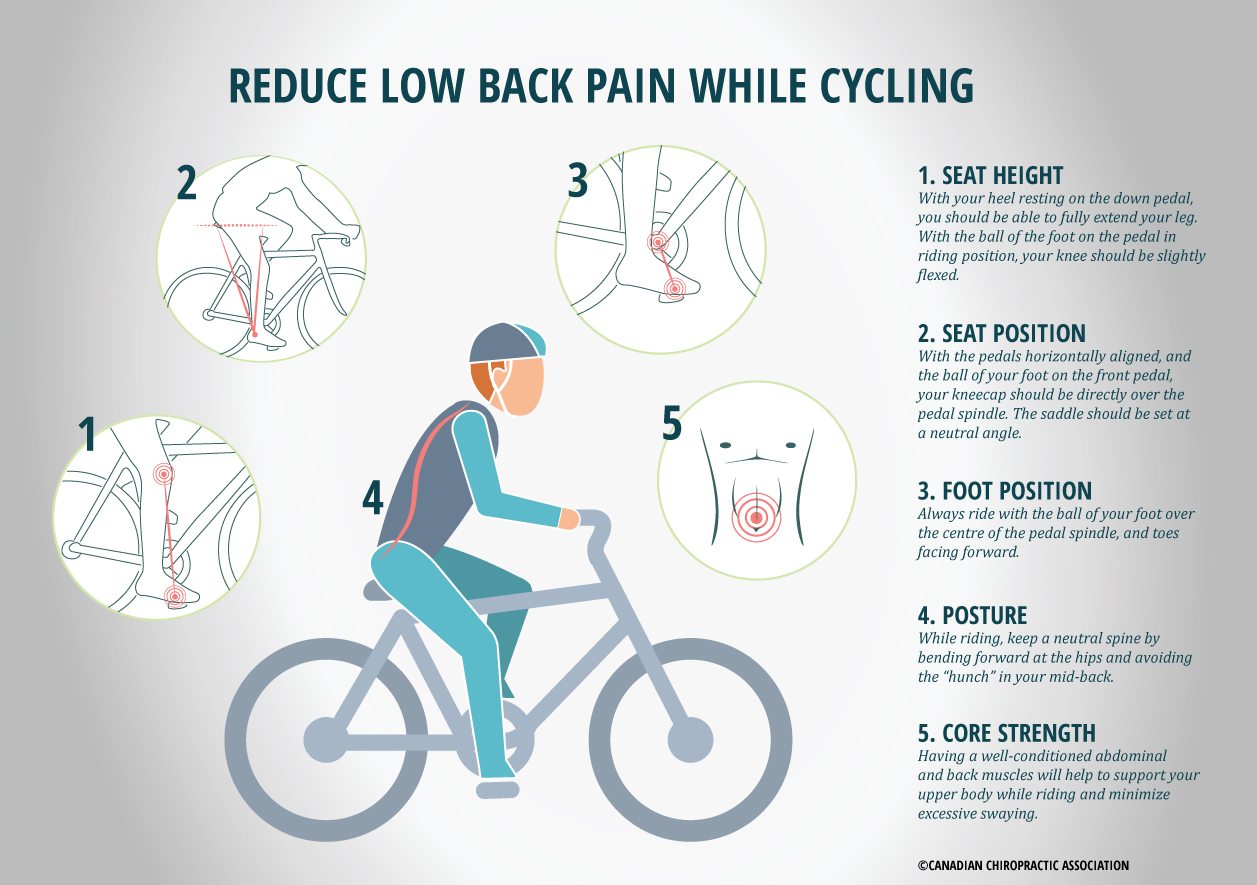How does poor posture lead to neck pain and low back pain?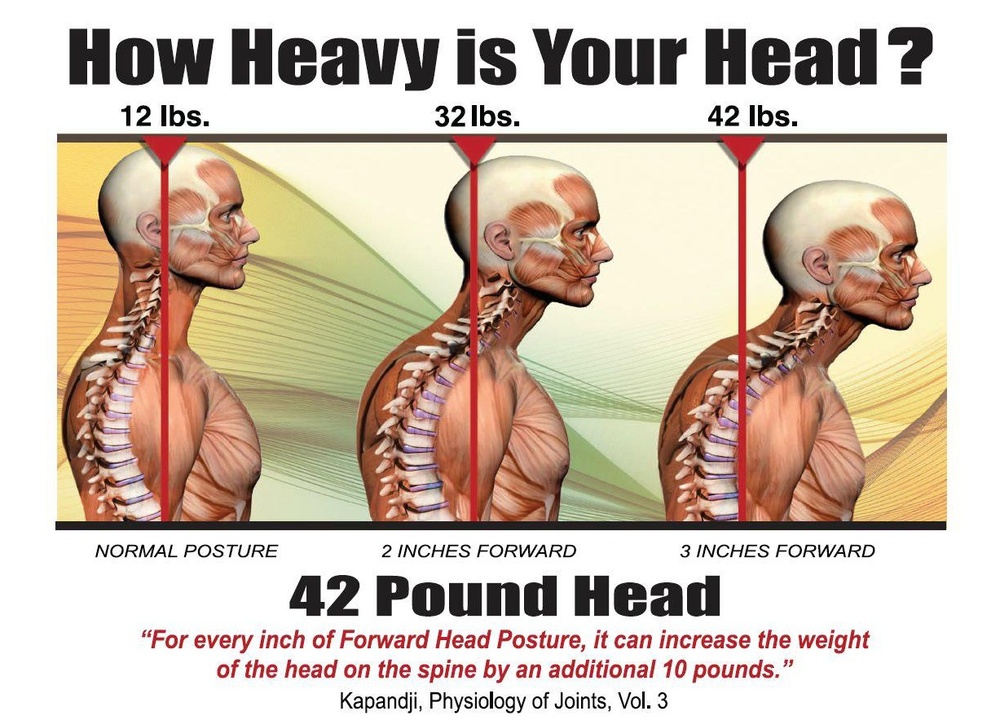
One of the most common causes of neck pain and low back pain has to do with poor posture. Because the majority of conditions in the neck and low back fall under the category of chronic repetitive overuse injuries, having a poor posture will increase the load/pressure on the ligaments, joints, muscles, and tendons trying to provide support. In other words, poor posture will predispose and/or increase the chance of developing a repetitive overuse injury in the neck and low-back. The reason for this is that poor posture will lead to the development of a system of muscle imbalances and overcompensation patterns (unstable patterns) in the body. “Over time, these imbalances will spread throughout the muscular system in a predictable manner.” (Janda) These imbalances and unstable patterns were first classified and coined by the famous Dr. Vladimir Janda and are known as “Upper Crossed Syndrome” and “Lower Crossed Syndrome”. Upper crossed syndrome and lower crossed syndrome are categories of postural syndrome.
What is postural syndrome? What is crossed syndrome?
Upper crossed syndrome is characterized by the over-facilitation of the upper trapezius, levator scapulae, sternocleidomastoid, and pectoralis muscles; whereas, there is inhibition of the deep neck flexors, lower trapezius, and serratus anterior muscles.
Lower crossed syndrome is characterized by the over-facilitation of the rectus femoris, iliopsoas, and thoraco-lumbar extensors; whereas, there is inhibition of the abdominal and gluteus muscles (maximus, minimus, medius).
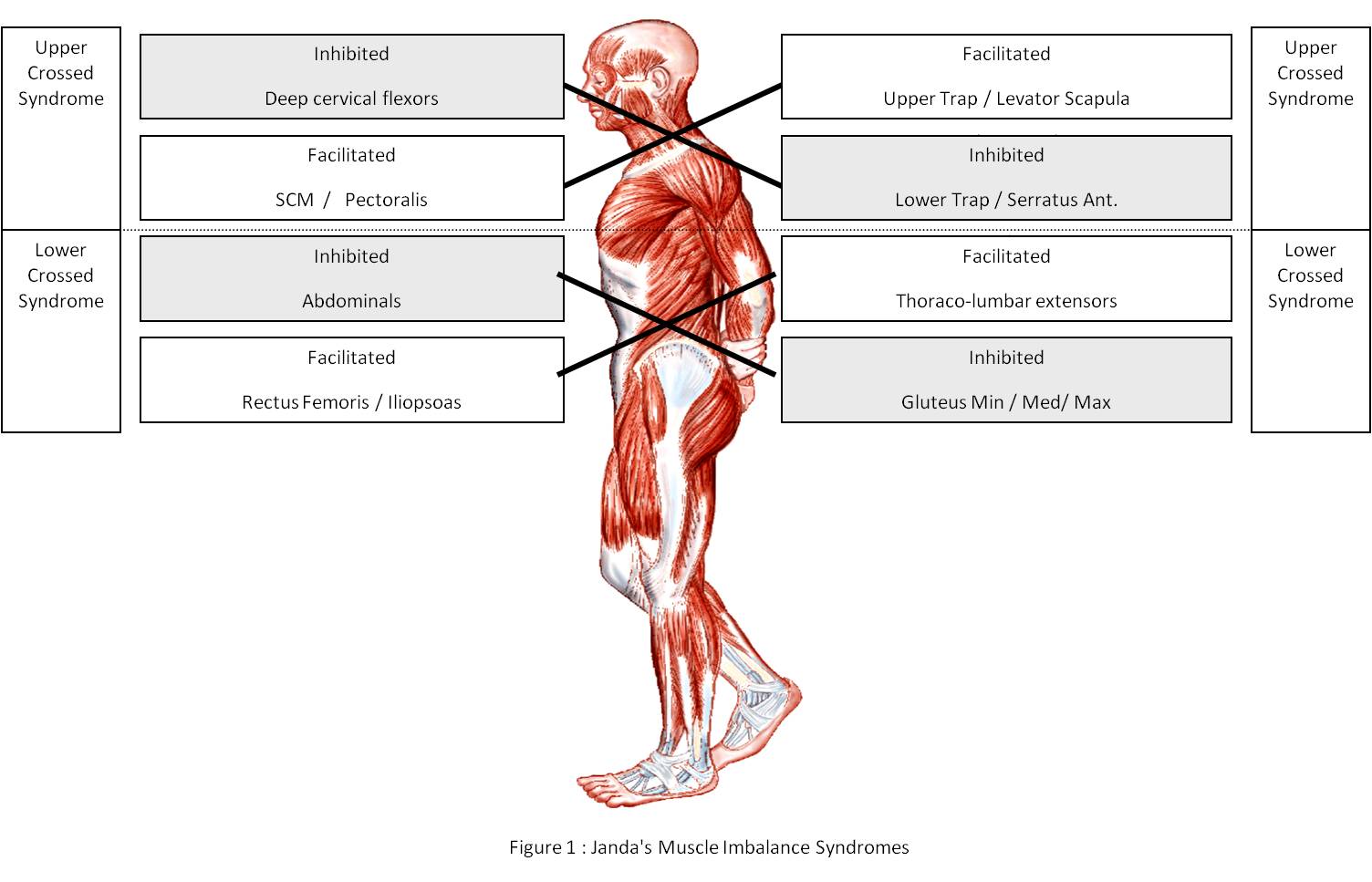
How does postural syndrome or poor posture affect the body?
The primary result of this crossed pattern of over-facilitation and inhibition is the development of muscle imbalances and abnormal movement patterns. The secondary result is the development of compensation patterns, instability, weakness, overuse, fatigue, abnormal wear and tear, joint dysfunction, hypo mobility and hyper mobility, degeneration, etc. It is these secondary problems that are the source of symptoms such as pain, limitation, and discomfort. Thus, the goal of therapy should not only be pain management, but rather correction of the source of the problem.
What treatments are available for poor posture?
- Chiropractic manipulation to increase mobility and function
- Active Release Technique (ART) – soft tissue therapy to decrease tissue tension and break up scar tissue
- Postural exercises
- Core strengthening exercises
- physiotherapy and massage
- Taping techniques and bracing
- Reintroduction of proper movement patterns
- Lifestyle changes the affect posture
What lifestyle changes can you make to improve your posture?
Postural syndrome is very common in western societies. Our lifestyles such as sitting behind a desk for hours on a daily basis, daily driving, prolonged use of smart phones and texting, poor diet, poor ergonomics, lack of exercise due to time constraints, and not paying attention to our slouching contribute significantly to developing postural syndromes. To decrease this phenomenon the least we can do is to be a bit more aware of our posture, and learn proper ergonomics while sitting behind a desk. It only takes a small effort to make significant changes.
References:
- http://www.jandaapproach.com/the-janda-approach/jandas-syndromes/
- http://www.cbsnews.com/news/omg-youre-texting-your-way-to-back-pain/
- http://erikdalton.com/forward-heads-funky-necks/
- Kapandji, Physiology of Joints, Vol. 3
Please SHARE this article if you find it useful to help spread knowledge and understanding!


